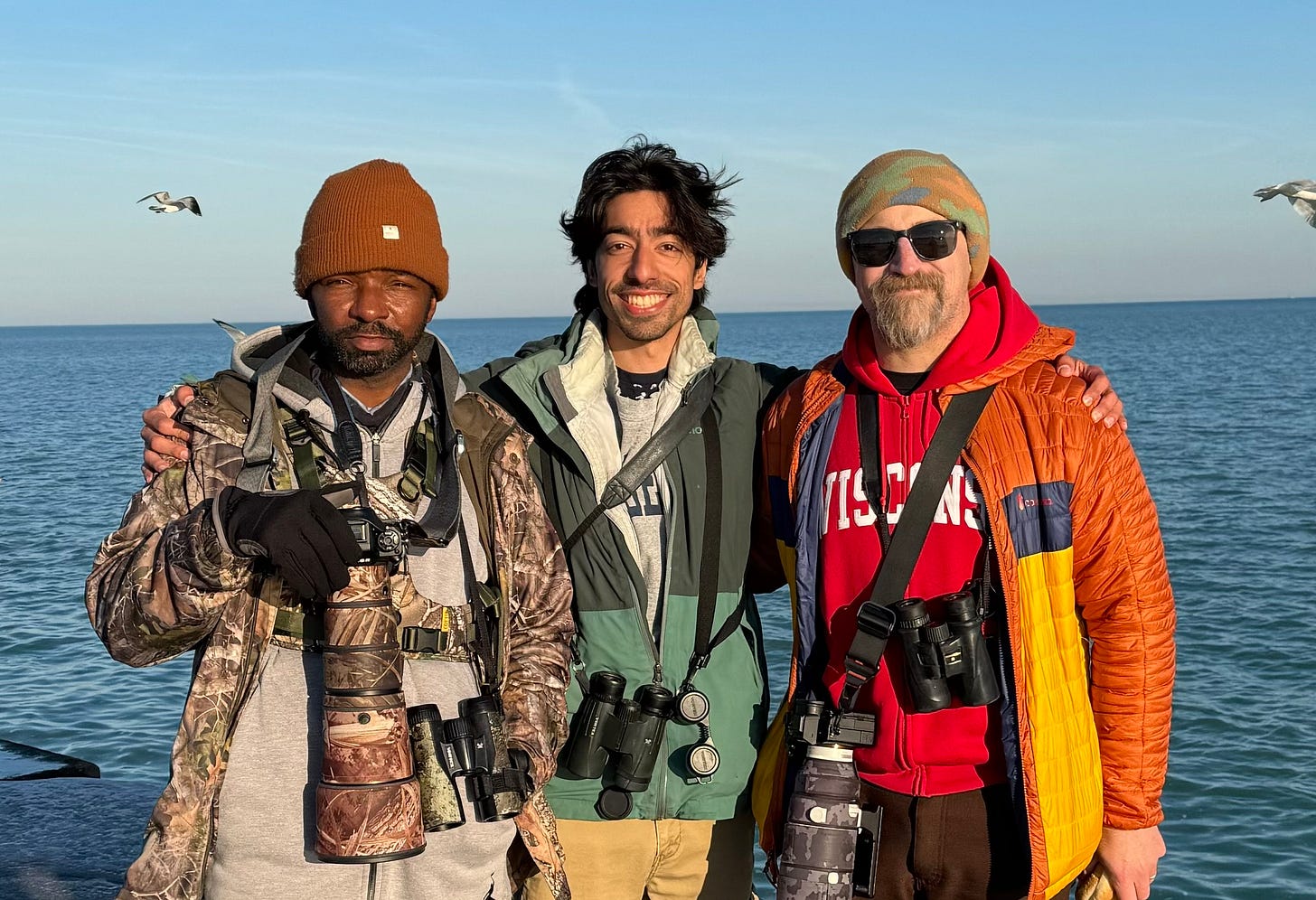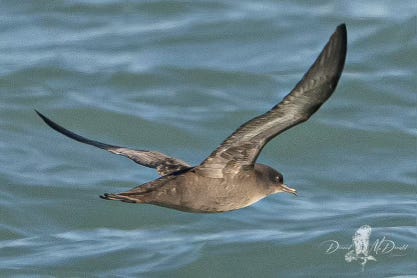Shear will: A record year concludes with state first
Tarik Shahzad topples county mark in stunning fashion.
It was the kind of search that’s routine during a big year. Someone had reported a White-winged Crossbill, a northern visitor, at the famous Montrose Point Bird Sanctuary on December 8. So Tarik Shahzad—who was on the cusp of breaking a big year record—and his friends Demond McDonald and Phillip Stosberg hurried over to the park.
“[The crossbill] was probably gone, but we all needed it,” Shahzad later said. “I said, ‘What do you think about going to Montrose?’ We show up at noon or 1pm and don’t find the crossbill.”
The trio decided to walk over to the Montrose fishing pier, a popular locale for rarities that juts into Lake Michigan. On a mild day, one can easily walk right to the very end of the jetty. Soon enough, Shahzad picks out a form flying from the east directly toward the pier.
“At first thought I assumed juvenile Parasitic Jaeger based on wing shape, coloration, and likelihood of species,” Shahzad said. “It’s a dark seabird with proportions too awkward for juvenile Herring Gull, very low over water, wings outstretched and not flapping.”
But it wasn’t a jaeger—a wonderful discovery in its own right. The bird was county No. 294 for Shahzad in the form of a Short-tailed Shearwater, a species that’s common in the Pacific Ocean, especially around Australia and New Zealand and up to the Bering Sea. One never observed and recorded in Illinois previously.
“My hands were shaking at the realization of a mega-rarity,” Shahzad later wrote on eBird.

In addition to seeing a state first, Shahzad edged Matthew Cvetas for the most species observed in one year in Cook County, Illinois. Cvetas saw 293 species during his record-setting 2022 run. His total surpassed Isoo O’Brien’s 288 in 2020.
Birding has changed in many ways since 1990, when Eric Walters became the first person to do an official Cook County big year and set the record at 274 species. If you’re old enough to remember 1990, that was a time before smartphones, apps, texts, and cell service. The internet was next to non-existent.
There are a couple ways to frame any big year in Cook County, as the locality is an outlier—both in its geography and social dynamics. Cook County may be the most birded county in the United States. Here’s the way I put it in 2021:
We’re a highly populous county at the crossroads of the Great Lakes and the Great Plains. There’s a diversity of habitat, from the swampy Calumet region in the south to the wooded hills of the Palos to the migrant traps on the lakefront. We have several top-notch birding clubs and institutions like the Field Museum, Peggy Notebaert Nature Museum, Shedd Aquarium and more that foster interest in nature and wildlife. All these things have resulted in a vibrant birding community.
Then there’s its location in northeastern Illinois, on the shores of migrant-rich Lake Michigan. Any big year in Cook County is likely going to be the biggest big year in Illinois birding history.
Shahzad, who’s only birded formally for a few years, refers to several “miracles” that propelled him to the record. Marbled Godwit is a key, rare shorebird that Shahzad was aiming to see. After missing the bird in its Spring migration window, his last chance was in its July-August Fall migration window. So, he camped out at Montrose Beach hoping for a chance the rarity would briefly touch-and-go as they typically do. After spending a month checking Montrose with no success, he switched to visiting Deadstick Pond, a South Side industrial wetland that’s turned up its fair share of rarities. Sure enough, on August 8 Shahzad encountered a Marbled Godwit at the pond.
“That was my favorite self-found bird,” Shahzad says. “I was religiously checking Deadstick Pond like Montrose. I spent the longest amount of time looking for the godwit over any other bird this year and nabbing the bird gave me the momentum I needed to pull off a string of other fall rarities.”
A big year may mean a lot of attention, but in the end it’s lonely at the top. Shahzad credited McDonald and Stosberg—who both notched great years themselves—with being critical to his success. It’s a tribute to the social nature of birding.
“They birded with me often and helped keep me sane,” Shahzad “You’re going alone all the time, and nobody signs up to do one with you. They were like my rocks.”
If you liked this post, you might like this previous post:
Loving it and listing it: Cook County big year records toppled in 2022
When 2022 started, Audrey Carl promised herself she wouldn’t bird as much as she did during the previous year.






Bob, so glad you told Shahzad's story here. I felt bad not being able to recognize his achievement in my end-of-year Daily Herald column. Nothing was official yet when my deadline came, although I did manage to mention the Short-tailed Shearwater sighting. He's obviously an amazing birder with SERIOUS skills! I hope he sees your post. Kudos to him and to Demond for getting such a critical photo.
Congratulations to Shahzad and his good buddies! And I hope you will still write good stories about environmental restoration!